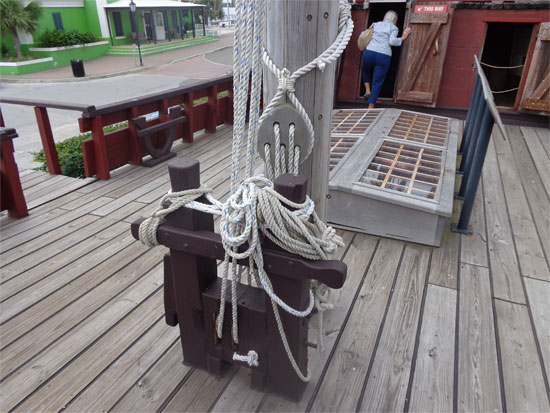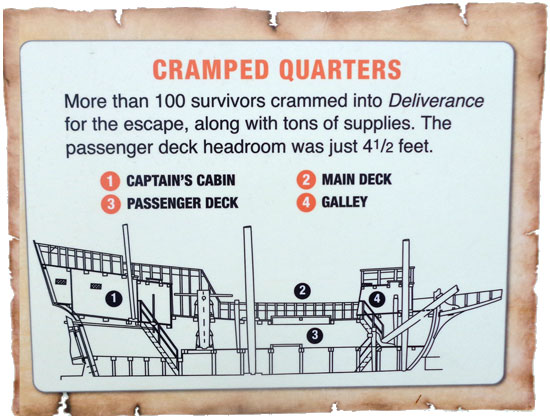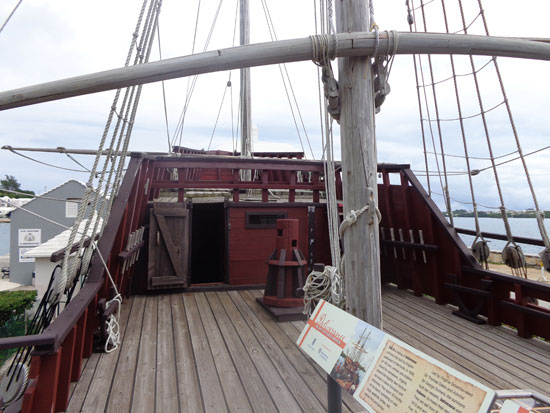(I have a story to tell here, but before I do, a quick weather and departure update, in case you missed it on Facebook yesterday. While the weather here in Bermuda is inviting; mostly sunny and breezy, for us, its not entirely what it seems. Those breezes are quite brisk at the moment and coming directly FROM where we need to be heading. In order to properly time our departure from Bermuda, we must wait for south or southwesterly winds, which it looks like we’ll have later in the week. We’re ready to go, but, sometimes, this is just what sailing is like … and what properly responding to your environment requires. Thanks. – DR)
Now, as I am discovering, the Islands of Bermuda have quite a colorful history. The first European vessel that landed on its shores was in 1505; a Spanish ship captained by Juan de Bermudez. Unlike many of the nearby Caribbean Islands, the island had no indigenous population at that time. In 1515, de Bermudez returned to the island that would eventually bear his name, landing a dozen pigs and sows for any unlucky mariners who might later be castaway there.
Of somewhat more relevance to the history of Bermuda is the early 17th century English ship named Deliverance. A replica of the Deliverance stands here in St. George, and I visited her the other day. I’d like to share her amazing story with you.

A replica of the English Ship Deliverance … 1609
In 1609, a convoy of nine ships, led by Sir George Sommers, left England bound for Jamestown, Virginia, to bring supplies to the new colony that had been established a few years earlier. Long before the days of weather forecasting and National Hurricane Prediction Centers, there were no ways to predict weather changes. So, it was that these ships were caught up in a hurricane. One of the ships, Sea Venture fell behind and ran aground on the treacherous reefs of Bermuda, amazingly with no loss of life. The crew and passengers spent 10 months salvaging equipment and supplies from the wrecked ship and with wood harvested from the local trees built two new ships. One was called Deliverance and the other called Patience. As the ships were small in size, the second ship was needed to haul the additional provisions and supplies they had gathered.
Once the ships were completed and ready to sail for Jamestown, they were stocked with all sorts of bounty from the local environment – live animals, pigs, fruits, vegetables and many other goods the shipwrecked survivors found valuable to their survival.
After an approximately two week sail, Deliverance arrived in Jamestown to a rousing welcome from the settlers there. Not only had they been presumed lost at sea, but the settlers in the intervening time had once again taken to suffering from starvation and such serious health issues, that their number had dwindled from the original 200 settlers down to just 60. The new supplies were critical to the colony’s survival and thus to the success of the longer term colonial experiment.
As sea-traffic between Europe and the American colonies grew in the 1700s, pirating and smuggling along the eastern seaboard of the Americas made Bermuda a welcome hideout for those who practiced such activities. From its calm natural harbors, these outlaw ships preyed on ships from Europe and the Americas right through the American war of independence, and the buildup of a dedicated U.S. Navy … which grew rather slowly out of the Continental Navy, which had come into existence when George Washington commissioned seven cruisers to intercept and capture British supply vessels.
 Halyards at the base of the mast
Halyards at the base of the mast
It was an incredibly exciting period in sea travel, as ships of different nations fought each other and pirates too … both for their sovereignty and for the right to transport the abundant resources that the “new” world possessed.
In any case, to get back to Deliverance, it was only 40 feet long (curiously enough, the very same length as Bodacious Dream.) As you can see from many of the pictures, it was of a very different design of boat than Bodacious Dream, and even different from other boats of the period. Boats of this type sailed very seldom to windward (sailing into the wind) and mostly sailed the “trade wind routes.” Such routes were typically downwind and cleaved closely to the major weather routes.
 Aft, (in the rear of the ship) there was a large cabin for the Captain, which also held the navigation table and from which control of the ship was managed. In those days, there was a captain, navigator and a sailing crew, as well as the passengers and supplies.
Aft, (in the rear of the ship) there was a large cabin for the Captain, which also held the navigation table and from which control of the ship was managed. In those days, there was a captain, navigator and a sailing crew, as well as the passengers and supplies.
To the left here, is a capstan of the period, a vertical-axled winch to apply force to ropes, cables, and hawsers.
In those days too, the tiller, which is the long arm that is used to steer the boat, was controlled by a whipstaff, a vertical pole extending to the top deck and pushed or pulled from side to side – similar to a modern-day tillers, but in the vertical orientation rather than the horizontal orientation.
Somehow, 100 passengers crowded onboard Deliverance along with all the supplies! Below, the space was divided into two decks – each with less than 5 feet of headroom! Squatting and crawling were the main means of maneuvering around the boat.
Walking around that boat the other day, and picturing what it might have been like for those 100 intrepid people, filled me with admiration for the raw courage and deep skill that those adventurous sailors of that earlier era possessed.
We may have advanced technologically, but there is still something in the encounter between humans and the sea that remains remarkably unchanged over the centuries.
– Dave and Bodacious Dream


